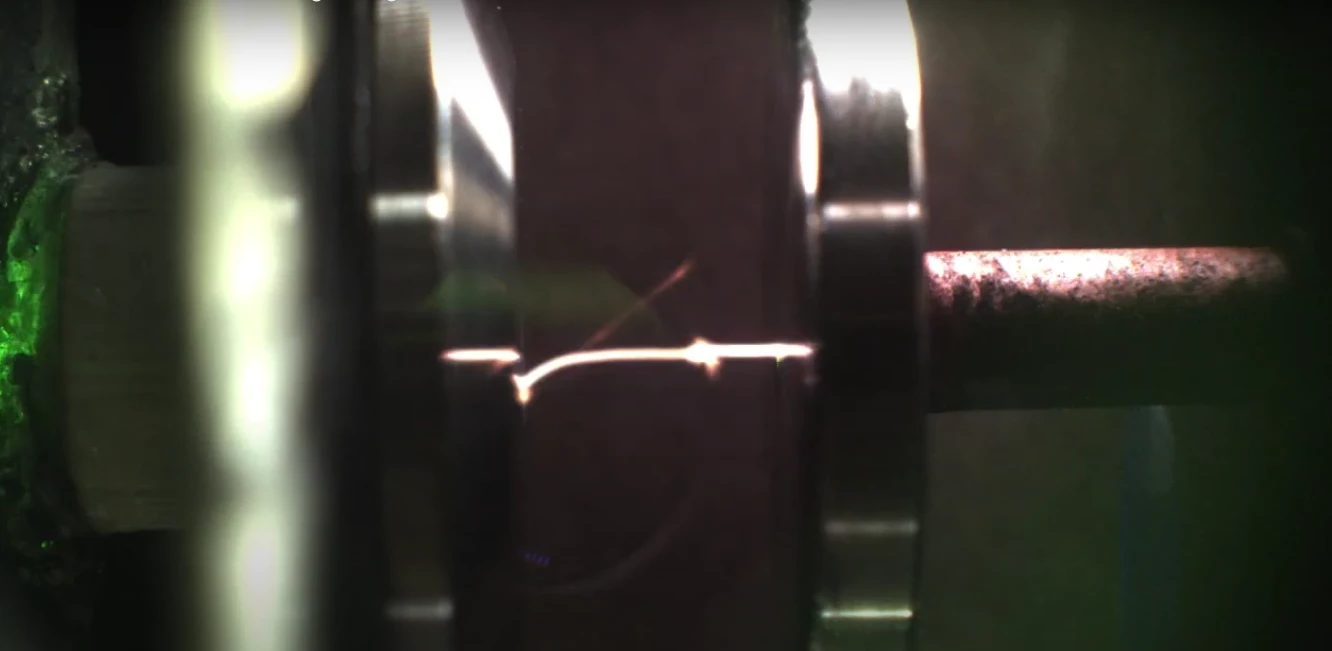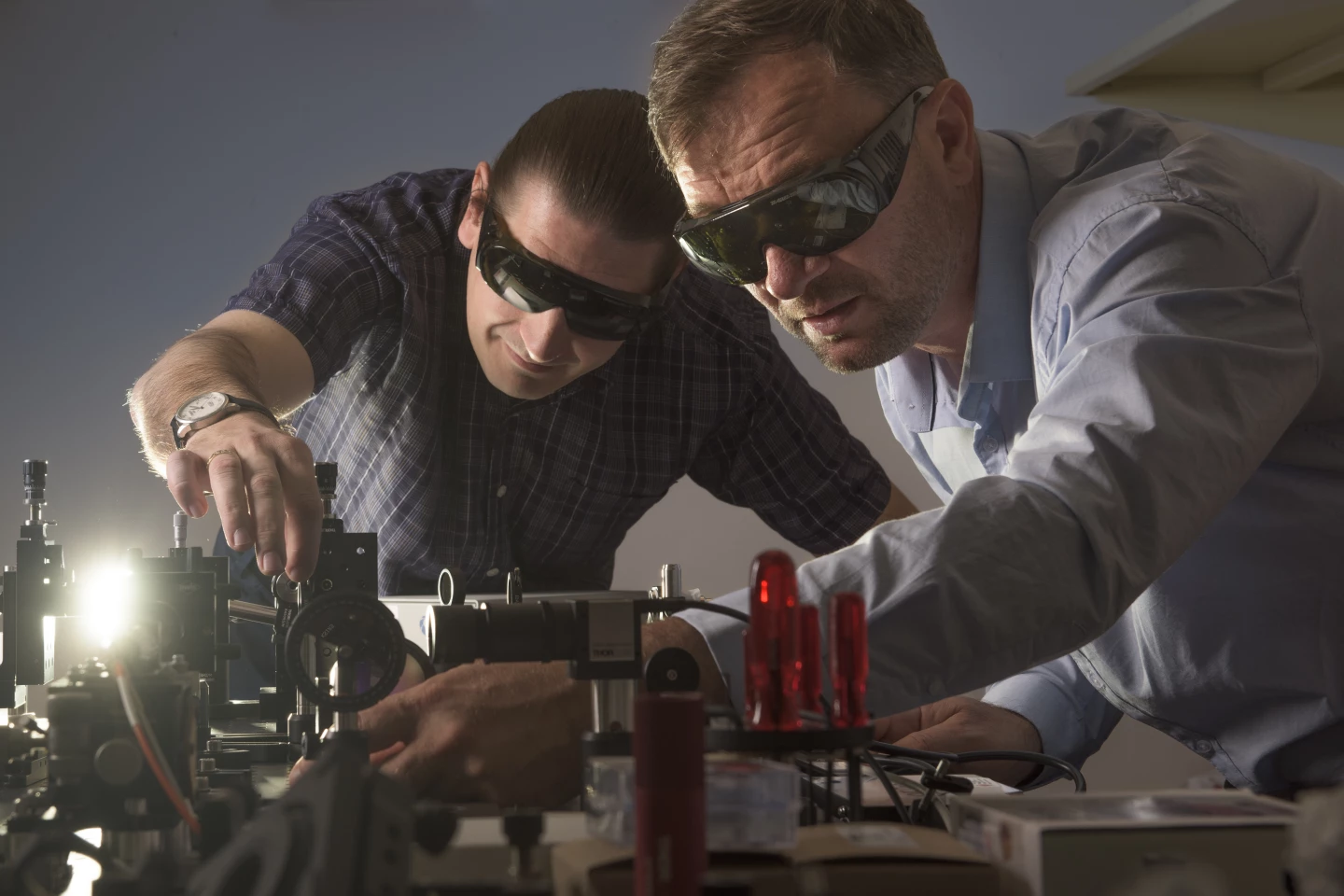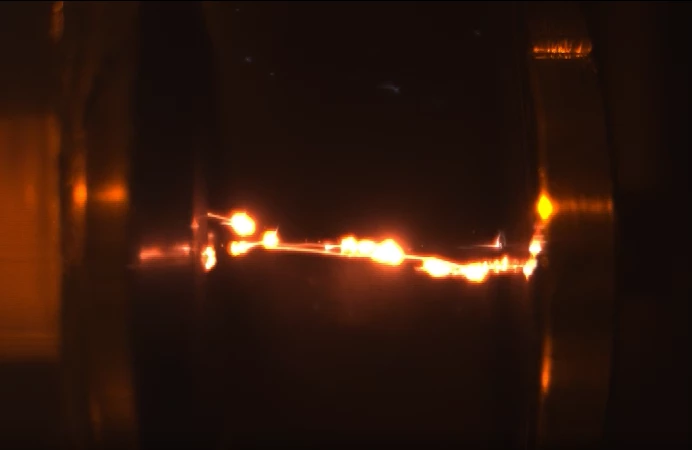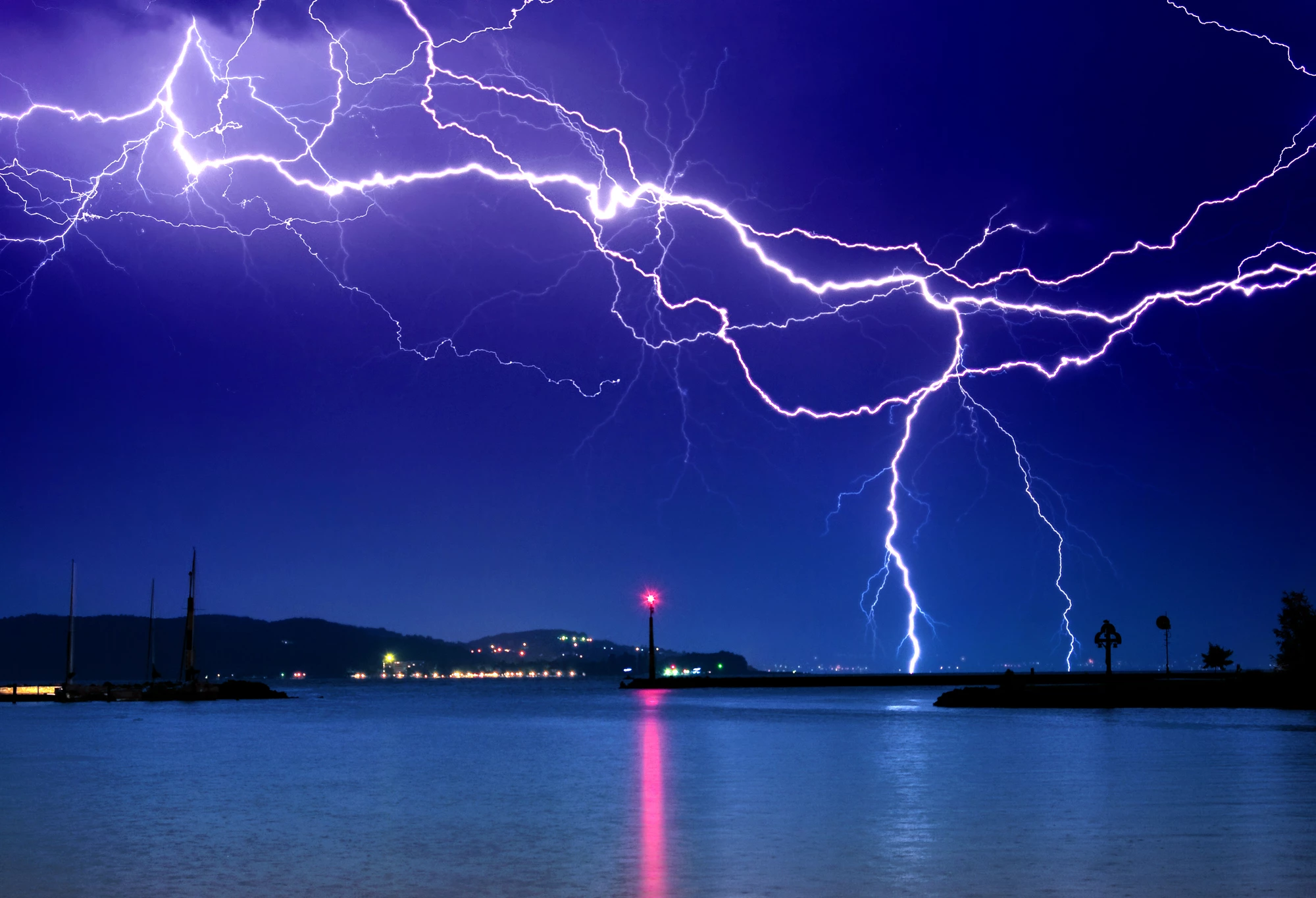Lightning strikes are a major trigger for wildfires, including the record-breaking blazes that devastated Australia, California and other regions this year. An international research team has now demonstrated a method that could effectively control where lightning strikes, using graphene microparticles trapped in a “tractor beam.”
A bolt of lightning can become hotter than the surface of the Sun – so it’s no surprise that when they hit dry grass, shrubs or trees, they can spark fires. Couple that with the fact that climate change is reducing rainfall in already fire-prone areas while potentially increasing the intensity of lightning storms, and you’ve got a dangerous recipe. This year’s devastation could become a worryingly regular occurrence.
But what if we had a portable device that can be carried out to the site of a storm, and set up to guide lightning away from fire hazards or vulnerable buildings? Such a breakthrough may be a step closer to reality, thanks to a new study from researchers at Australian National University, the University of New South Wales, Texas A&M, and the University of California, Los Angeles.

The team demonstrated the concept in a lab, by first recreating stormy conditions using two charged parallel plates separated by a small gap of air. Normally, jolts of electricity jump between the plates at random, mimicking lightning, but by using some clever physics, the researchers were able to control where the bolts traveled.
“We had a relatively simple setup,” Andrey Miroshnichenko, co-author of the study, tells New Atlas. “It was just two conducting plates, which were charged. And then we introduced particles, hot particles inside a tractor beam, which induces the discharge between two plates. It showed that we can control where and when the discharge should happen, between the two plates under lab conditions.”
In nature, lightning is essentially electricity looking for the most conductive path to complete a circuit from cloud to cloud, or cloud to ground. For us casual observers, that path often appears random as the bolts arc and fork across the sky, but they’re following very specific channels of ionized gas, which are more conductive than the air around them.
In theory then, you could help guide where lightning strikes by giving it a very conductive path to follow. And that’s where the graphene microparticles come in. With its light weight, strength, and excellent thermal and electrical conductivity, a chain of graphene particles can create the perfect path.
“We introduced hot graphene particles in between (the plates), and in order to do that we used what was called a tractor beam,” Miroshnichenko tells us. “A tractor beam is a hollow core laser beam, and particles were trapped inside. And that’s how we delivered particles in the space between the plates.”

This kind of tractor beam won’t be capturing spaceships anytime soon, but it has been shown to work on particles for around a decade now. Essentially, particles are trapped in the center of the hollow laser beam, because whenever they drift into the light a small thrust known as the photophoretic force pushes them back into the darker center.
Energy from the laser also happens to push the particles forward, and heats them up. When they get hot enough, they ionize the air around them, creating a path along the laser beam that’s more conductive – so it’s all but irresistible for lightning.
Put simply, wherever you point this tractor beam, lightning is much more likely to strike.
"We have an invisible thread, a pen with which we can write light and control the electrical discharge to within about one tenth the width of a human hair," says Miroshnichenko.
The effects are clear in videos of the lab experiments (below). The first clip shows the beam of graphene microparticles, which are glowing so brightly from the heat that you can’t even see the electrical discharge zap through them.
In the second clip, the lightning is much more obvious – the first bolt follows right along the beam. After that the beam is switched off, but the next few strikes still follow the rough path left behind by the residual heat. By the end of the video, the lightning goes back to its regular random pattern, highlighting just how much a difference it makes when controlled.
While graphene was a handy test subject, it may not be necessary. Miroshnichenko says that eventually the tractor beam could be made to trap and heat up whatever particles are on hand, including potentially those already in the ambient air.
Another benefit of the new system is that it can be done with relatively low-powered lasers, operating on the scale of milliwatts. Other teams have tried directly ionizing gases using pulses of high-powered lasers, but this technique isn’t as efficient and can’t propagate as far as the tractor beam.
While it’s so far only been tested on small scales in the lab, Miroshnichenko says the system should be relatively straightforward to scale up. The technology is already there, and he hopes to have field tests completed within the next three or four years.
Ultimately, having machines that effectively control where lightning strikes could be invaluable for reducing wildfires, and the huge environmental and property damage and loss of life they incur.

There are still major hurdles to overcome though. At this stage, the experiment was all about inducing the discharge and channeling it to a desired point. Natural lightning is obviously far more powerful than sparks between two small plates, and the team doesn’t yet have the tech to deal with that energy. It would need to be dissipated into the ground the way a lightning rod works, but doing so safely is its own challenge.
In the meantime, the lab-scale technology could also find applications in manufacturing such as welding, or in medicine as a kind of optical scalpel to remove cancerous tissue.
The research was published in the journal Nature Communications.
Source: Australian National University





